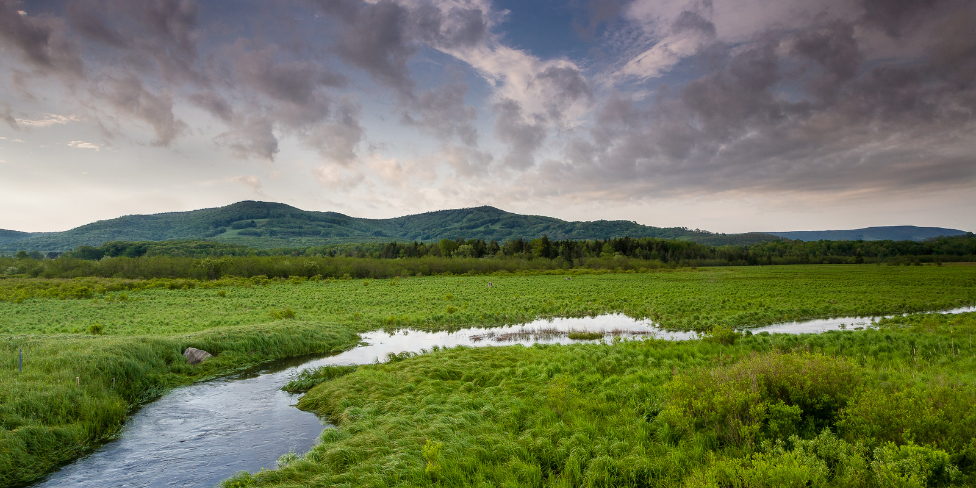By Luanne McGovern
The recent Supreme Court decision in Sackett vs. Environmental Protection Agency has thrown into chaos the protections for the nation’s wetlands and the Clean Water Act enforcement. In a ruling that shocked environmentalists and gladdened conservatives, the definition of what constitutes federally protected water has been significantly revised. Some sources estimate that more than 50% of the previously Clean Water Act-protected wetlands and waterways will now be open for development without a permit.
How did we get here?
Chantell and Mike Sackett purchased a 0.63-acre property in Idaho near Priest Lake in 2004. In preparation for building a personal home, they obtained local building permits and began backfilling the property in 2007. Soon after, they received a notification from the United States Environmental Protection Agency that their property contained “wetlands” and may be subject to regulation under the Clean Water Act. They were instructed to halt construction and obtain a permit from the U.S. Army Corps of Engineers.
The Sacketts sued in 2008, and their case wound its way through the courts for the next 14 years. In 2022, the U.S. Supreme Court agreed to hear the case, and the decision was handed down on May 25, 2023.
What was decided?
The justices ruled unanimously that the Clean Water Act did not apply to the Sackett property, and they could proceed with construction. The Environmental Protection Agency had classified the wetlands on the Sacketts’ lot as “waters of the United States” because they were “near a ditch that fed into a creek, which fed into Priest Lake, a navigable, intrastate lake.” The justices found this to be over-reach by the Environmental Protection Agency.
But the justices did not stop with a simple ruling on the Sackett’s case. In a sweeping move, the conservative majority revised the definition of the “waters of the United States” (WOTUS) that could be protected by the Clean Water Act.
In a prior case in 2006, Rapanos v. United States, two competing tests for determining what constitutes WOTUS were put forward – the “significant nexus” test and the “relatively permanent and adjacent” test. The “significant nexus” test has been used by the courts to determine if adjacent wetlands or waters had the ability to significantly affect the chemical, physical and biological integrity of navigable waters. The “relatively permanent and adjacent” test takes a much narrower view that wetlands must have a visible surface water connection to navigable waters, to be considered WOTUS.
In the Sackett ruling, Justice Alito threw out the “significant nexus” test and ruled that wetlands are only protected when it is “difficult to determine where the water ends and the wetland begins.”
Why is this so confusing?
The case revolves around the definition of what truly is a WOTUS, and whether the federal government has the legal right to regulate water on private property.
The Clean Water Act was passed in 1972 to regulate pollution of the “waters of the U.S.,” but the boundaries of what constituted WOTUS were unclear. As stated previously, the Rapanos decision in 2006 was an attempt to define WOTUS, but led to more confusion. In all these cases, the difficulty is defining words such as “bordering,” “adjacent,” “neighboring,” “ephemeral” or “intermittent” when talking about water systems. Are all water systems ultimately connected? And should all water be subject to federal oversight?
The Alito decision has now determined that the Clean Water Act applies only to “a relatively permanent body of water connected to traditional interstate navigable waters … and … that the wetland has a continuous surface connection with that water, making it difficult to determine where the ‘water’ ends and the ‘wetland’ begins.”
It would seem that the decision introduces even more confusion into the definition, given the complexity of water systems and wetland ecology.
What happens now?
The ruling has thrown into chaos the permitting process for construction near wetlands and waterways. The U.S. Environmental Protection Agency and the Army Corps of Engineers must now go back and revise their guidance around the permitting process. Projects that are in process and have been subject to Clean Water Act permits are now in limbo. Permit renewals will now be subject to the same rules as new permits. Millions of dollars in mitigation efforts and years of work to minimize impacts to wetlands may now be invalidated.
Impacts to public lands could be significant. The Chesapeake Bay, the Everglades, and many national parks could lose significant protection from upstream pollution.
In West Virginia, the impact could be severe. Most states—West Virginia included—have generally deferred to the federal government on wetland determinations and permits. While some states have robust local programs to oversee wetland protections, it would seem highly unlikely, given the current political climate, that West Virginia would put forward any new rules more stringent than the federal ones.
To read the Sackett decision: https://bit.ly/WOTUS
Read more on this topic: https://bit.ly/WOTUS2
Photo: Wetlands in Canaan Valley Wildlife Refuge (Kent Mason)

